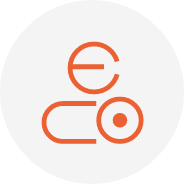Smart Electric Screwdrivers vs. Servo Electric Screwdrivers: Key Differences and How to Choose
Choosing between a smart electric screwdriver and a servo electric screwdriver requires a comprehensive evaluation across multiple dimensions, including technical architecture, functional scalability, and real-world application scenarios. Although both are driven by servo motors, their design philosophies and performance characteristics differ significantly, as outlined below:

1. Core Differences: Control Logic and Functional Scalability
Servo electric screwdrivers are typically retrofitted from servo motors and drives. Their control logic relies on manual programming, requiring PLC commands to execute repetitive single actions. This approach demands high programming expertise and offers limited scalability, making it difficult to adapt to dynamic adjustments in complex working conditions. In contrast, smart electric screwdrivers integrate high-precision control algorithms to form a complete digital tightening system. Their advantages include:
Diverse Strategies: Supports multi-step tightening strategies (e.g., pre-tightening → fine-tuning → validation), automatically matching tightening curves for screws of different materials and specifications, reducing manual tuning workload.
2. Technical Breakthroughs of Danikor Smart Electric Screwdrivers
As a leading brand in intelligent tightening, Danikor amplifies the advantages of smart technology through hardware-software co-innovation:
Adaptive Strategy Capability: Equipped with dynamic learning algorithms, it automatically identifies the engagement point between the screw and workpiece, generating personalized tightening parameters that significantly shorten debugging cycles. Pre-configured strategy templates (e.g., soft-start anti-cross-threading, multi-stage torque ramp control) cover most application scenarios.
Intelligent Error-Proofing System: Establishes a full-process error-proofing mechanism from permission management to process monitoring. Hierarchical assembly permissions prevent misoperation, while real-time data stream analysis provides early warnings for potential faults (e.g., screw misalignment, missing washers), shifting quality control from post-process inspection to in-process prevention.
Data Interaction Ecosystem: Seamlessly integrates with MES, PLC, and other systems, synchronizing tightening data with production management platforms in real time. Users can intuitively view equipment status, process parameters, and historical records through a visual interface, significantly improving production transparency.
3. Selection Recommendations and Scenario Adaptation
For routine standardized operations, servo electric screwdrivers remain cost-effective, but their functionality is bounded by pre-programmed routines, making them unsuitable for highly complex tasks. Danikor smart electric screwdrivers are better aligned with modern intelligent manufacturing needs due to:
In summary, smart electric screwdrivers reconstruct traditional tightening operations through algorithms, transforming simple execution tools into intelligent terminals capable of sensing, analyzing, and decision-making. Danikor’s solution particularly embodies the philosophy of "data-driven process evolution." Its systematic functional design not only improves single-point operational efficiency but also enables continuous manufacturing process optimization through data accumulation. This leap from tool to system is the core consideration for equipment selection in smart manufacturing transformation.











